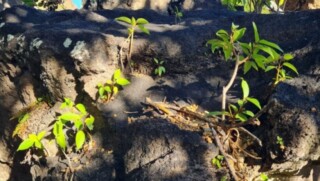Statia’s economy considered stagnant since 2018
ORANJESTAD – Contrary to Bonaire, where there is clear economic growth, the economic growth of Sint Eustatius has been stagnating for several years. This is one of the conclusions of the report ‘State Committee on Demographic Developments in the Caribbean Netherlands 2050’
According to the report, since 2018, Statia’s economy has been shrinking, with a decline in GDP per capita of about 11% since 2012. The Committee also states that economic growth is essential for maintaining broad prosperity, public services, and social insurance.
The economy of Sint Eustatius is heavily dependent on the oil sector, with the GTI Statia oil terminal being the largest employer in the private sector. This dependency makes the economy vulnerable to shocks. Since 2017, the GDP has declined due to reduced demand for oil and oil storage. Additionally, the future of the oil sector is uncertain due to recent layoffs and potential future scenarios for the terminal, including bankruptcy.
Tourism
The tourism sector also plays a role in the economy of Sint Eustatius. Before the COVID-19 pandemic, over a thousand tourists visited the island monthly, but this number has not fully recovered after the pandemic.
Due to the stagnating economy, a growing share of Statian residents is struggling financially. In 2021, 32% of the population had financial problems, particularly those with low education levels.
Low income
The proportion of the population with an income below the social minimum has also increased, unlike in Bonaire and Saba, where this proportion has remained stable or slightly decreased. The cost of living is high in Sint Eustatius, causing many people to have multiple jobs to make ends meet.













